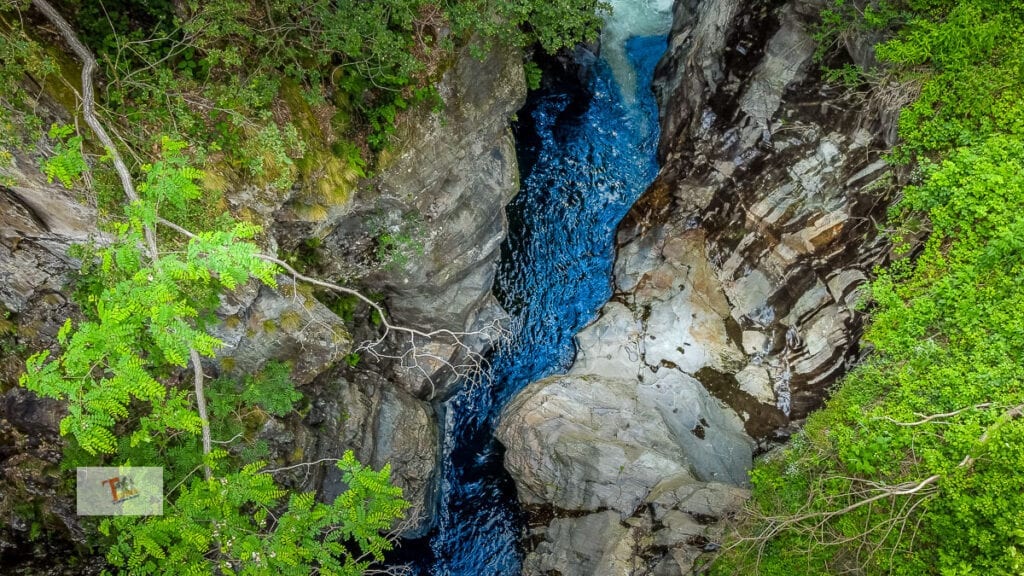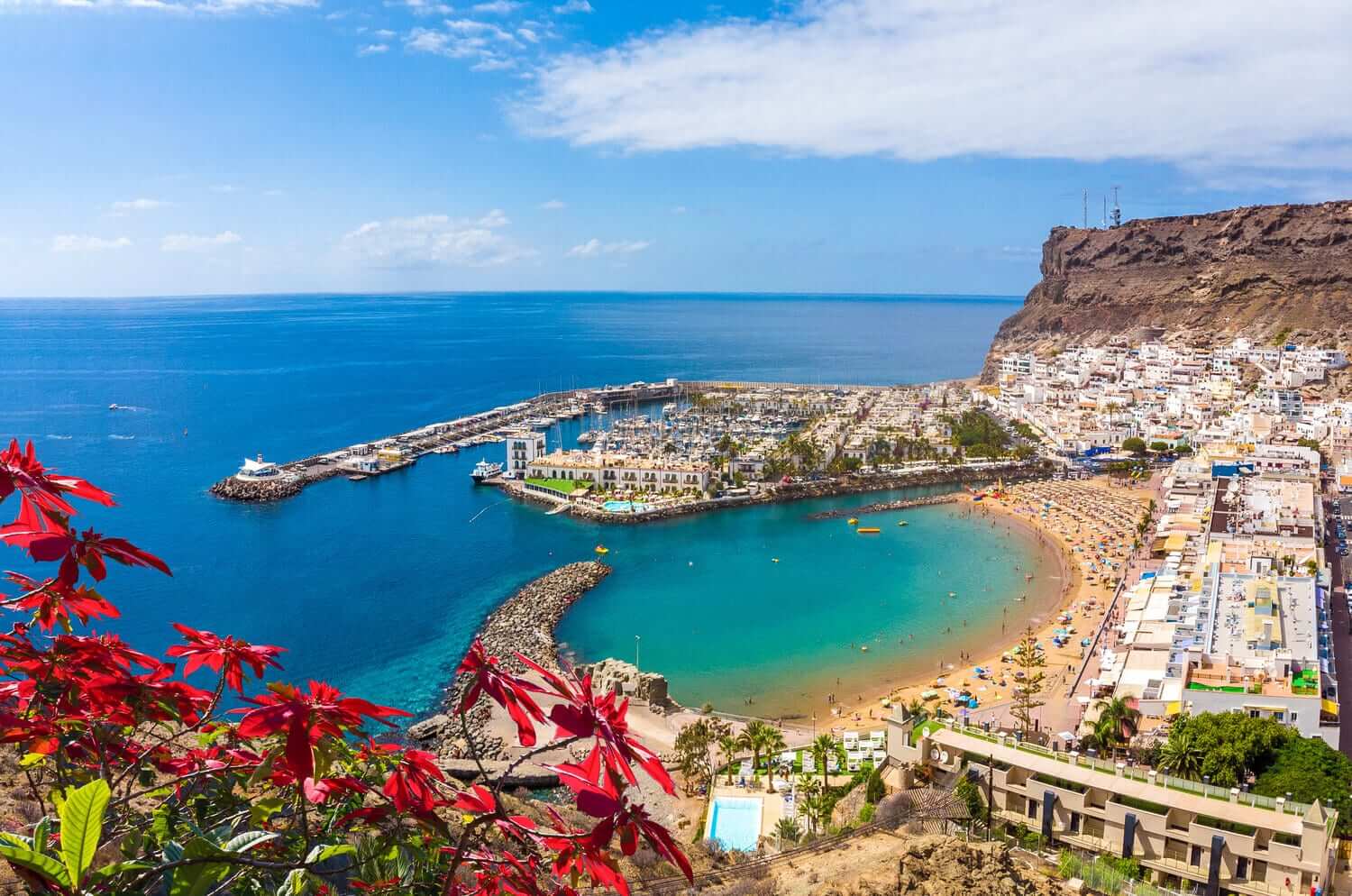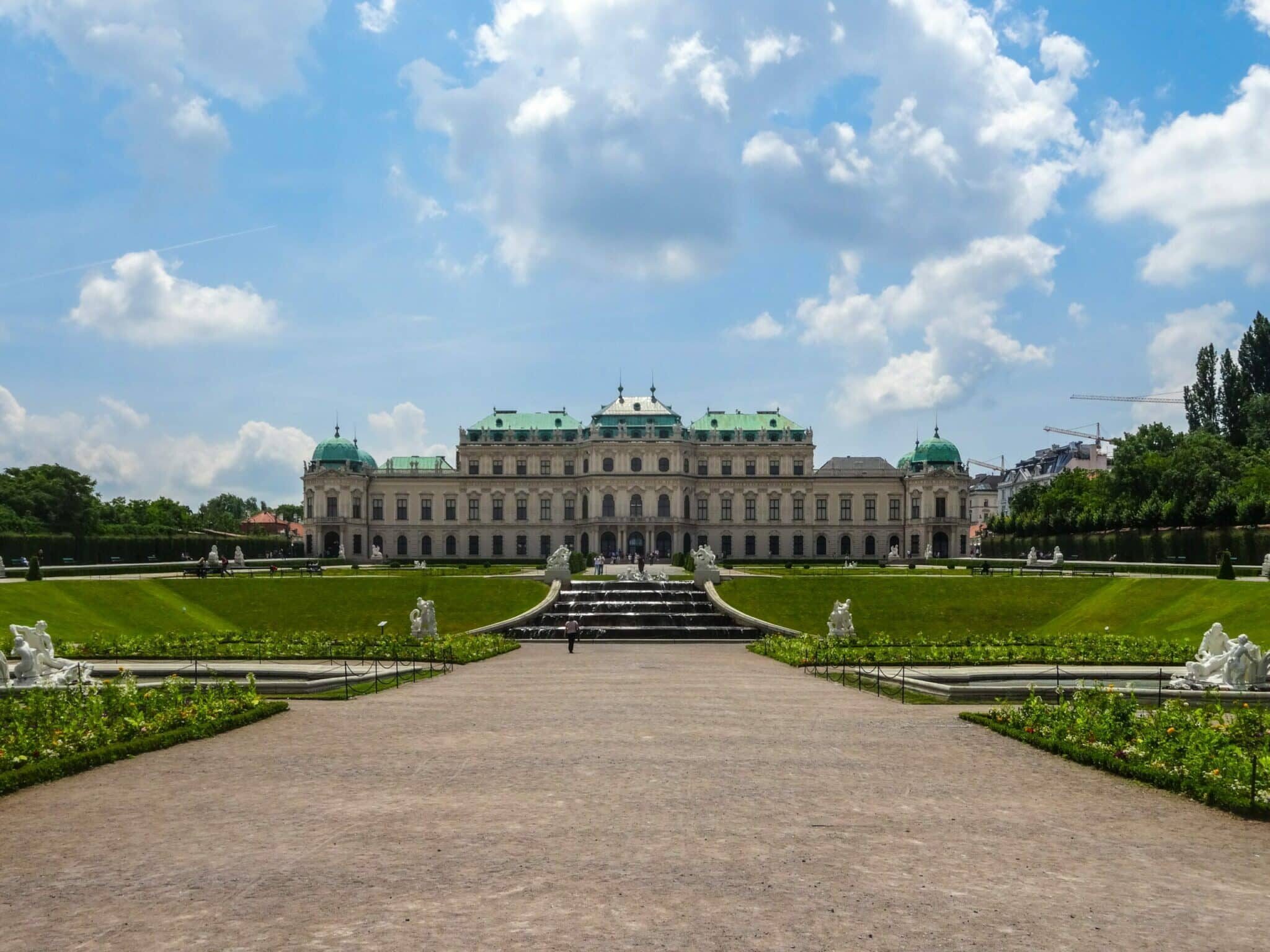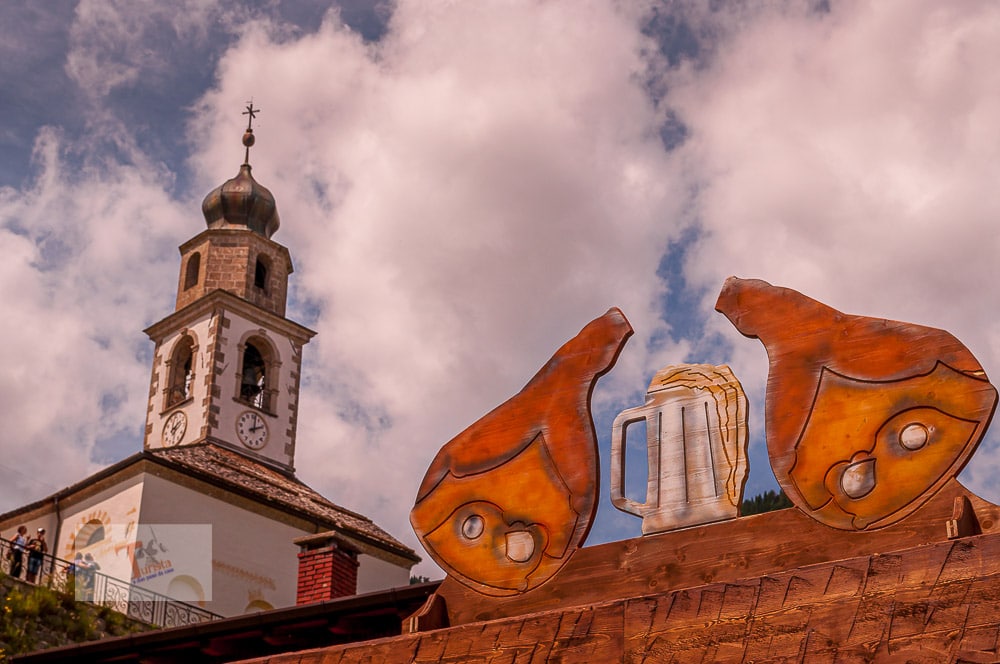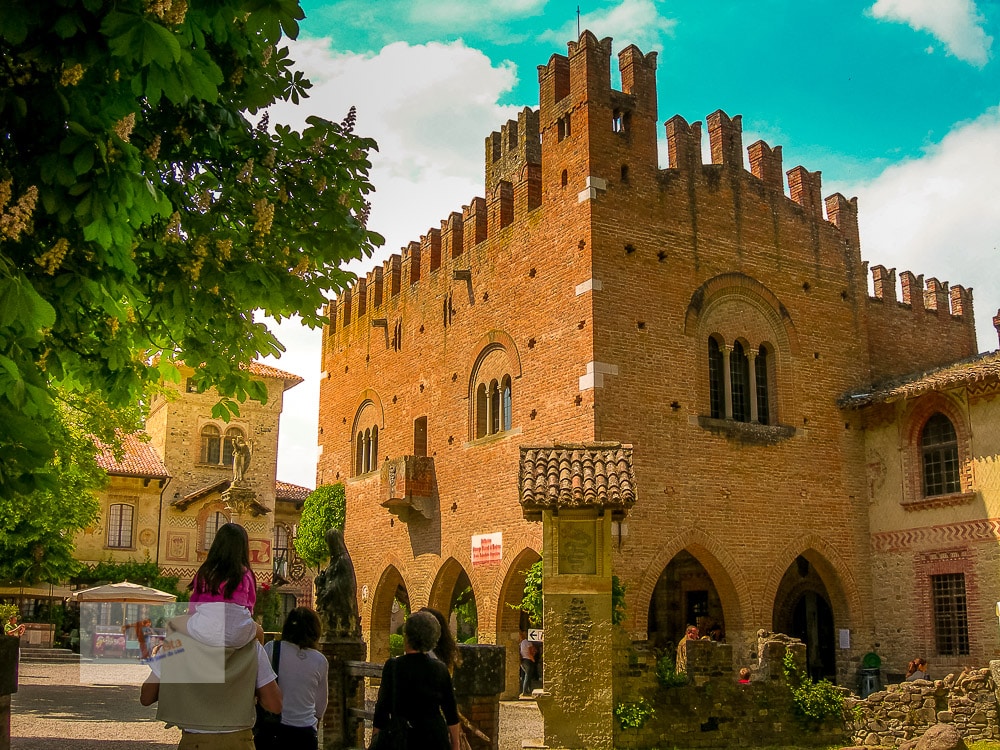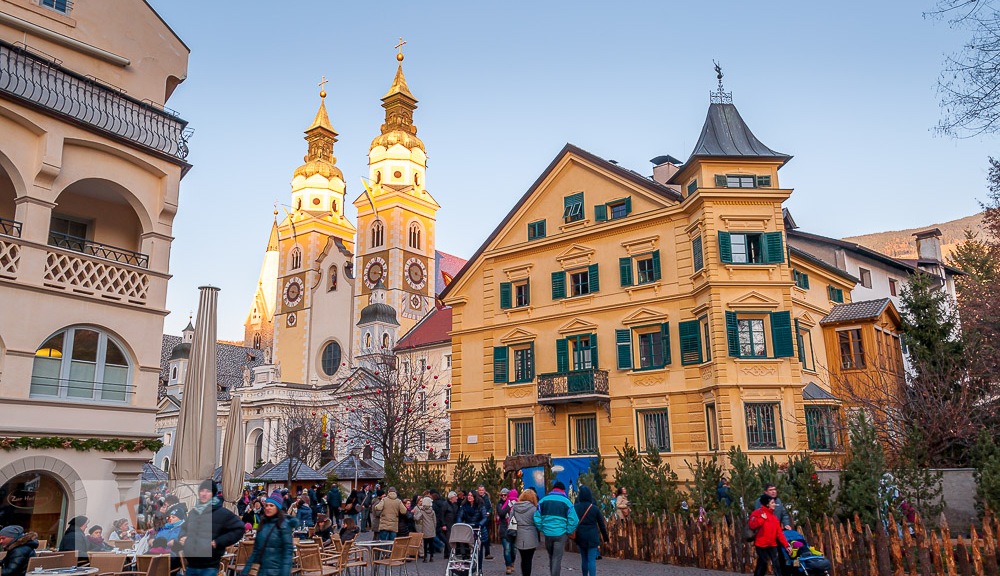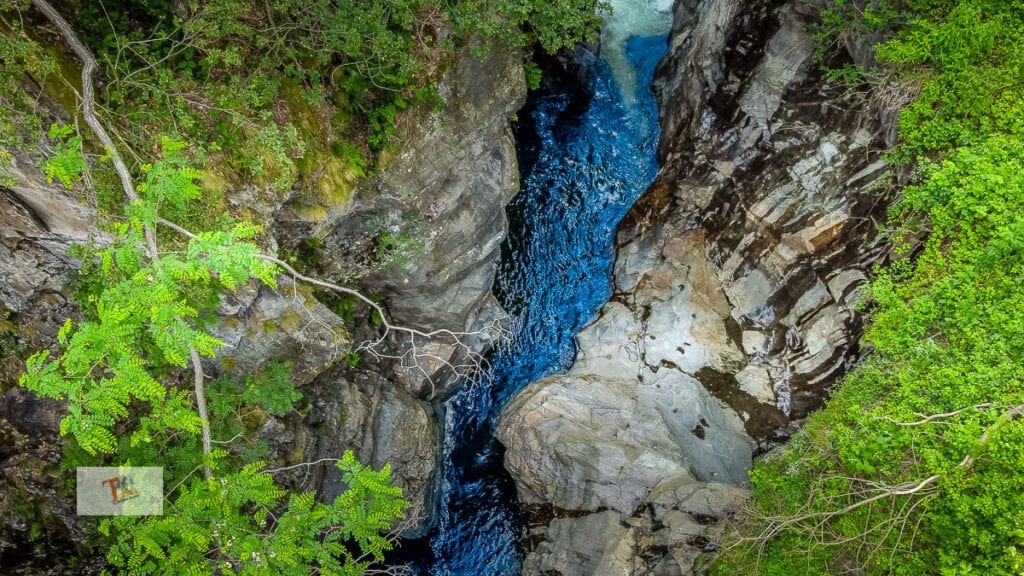
Three kilometers from the point where the Cannobino stream flows into Lake Maggiore, you can admire the Orrido di Sant’Anna. We are in Cannobio, a lakeside location in Verbano-Cusio-Ossola, in Piedmont. This stupendous place is the result of centuries of erosion of the rock walls by the water that here has created a rift by sliding very quickly between smooth and overhanging walls and rock spurs.
A very popular place
A very popular place, especially in summer, since at the end of the ravine, shortly after the church of Sant’Anna, the water subsides its fury and widens forming a pool of clear water. Next to it there is a small beach where you can stop to sunbathe and why not, for a refreshing dip in the clear waters of this place. In summer the water temperature does not exceed 16 degrees, in winter, however, it is almost freezing, reaching 2/3 degrees, while the depth of the pool approaches, in some points to 25 meters. The beach seen from the top of the bridge can be reached via a staircase that descends to the water level. We can stop. The area is also equipped with bathrooms.
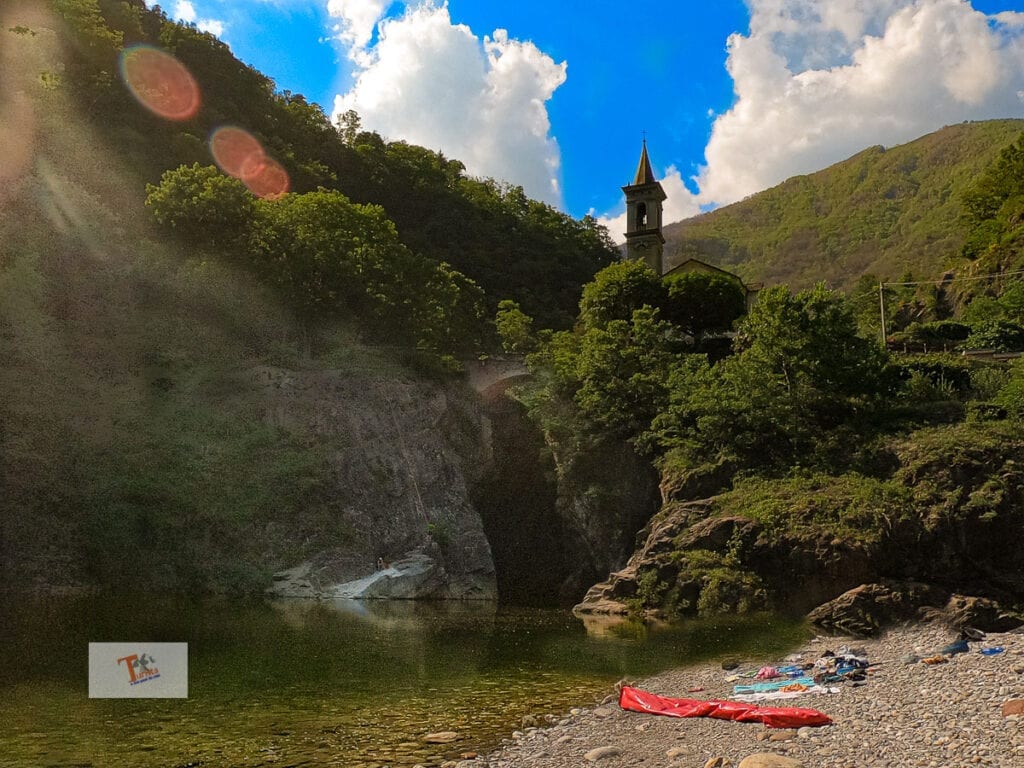
The horrid
The most spectacular area of the Orrido di Sant’Anna is certainly the one upstream of the medieval bridge, here the water creeps between the narrow rocks and slips away among the trees that almost hide this landscape. The Orrido takes its name from the sanctuary that stands next to it, a construction dating back to 1638. The water flows in the narrow crack in the rock under the two bridges: the one used for the passage of cars, where one passes regularly and the bridge of medieval origin (also called “Augustan”) suitable for pedestrians only, although today it is unfortunately closed, it can be admired in all its beauty from the dirt road that runs alongside the church. To better see the Orrido, immediately after the church and next to a restaurant there is a balcony that leans slightly towards the void. From here you can understand the beauty of this place and its ravine.
The church of Sant’Anna
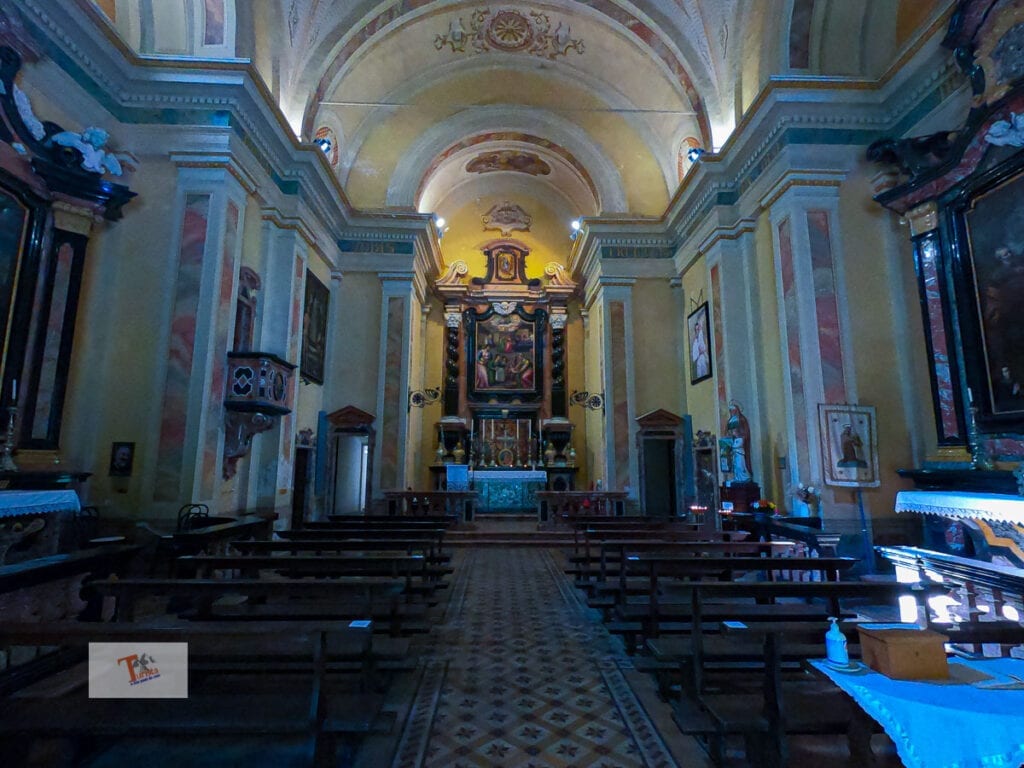
We arrive here to admire the spectacle of the ravine, but the church dedicated to Sant’Anna is also worth a visit, a small architectural masterpiece built in 1683 which incorporates a small church dedicated to the saint, inside which there is the ancient frescoed chapel dedicated to the Madonna di Loreto seen behind the altar, in the apse of the current structure. The high altar decorated with twisted black marble columns and elegant friezes is also of considerable interest. This work was donated to the church by the Terrafiumesi society in Rome, a corporation that gathered the construction workers of the village. Inside the church there are also the altars dedicated to Saints Anna and Gioacchino and to San Giuseppe.
But how do I get to the Sant’Anna’s Orrido?
From Cannobio follow the signs for the Cannobina Valley. Outside the town, after about a kilometer, take the road on the right with the signs for the Orrido di Sant’Anna. After another kilometer, at the crossroads, take the road on the left, which rises slightly. Continue to the tourist sign indicating the Orrido, finally take the road on the right and you will arrive at the car park.

